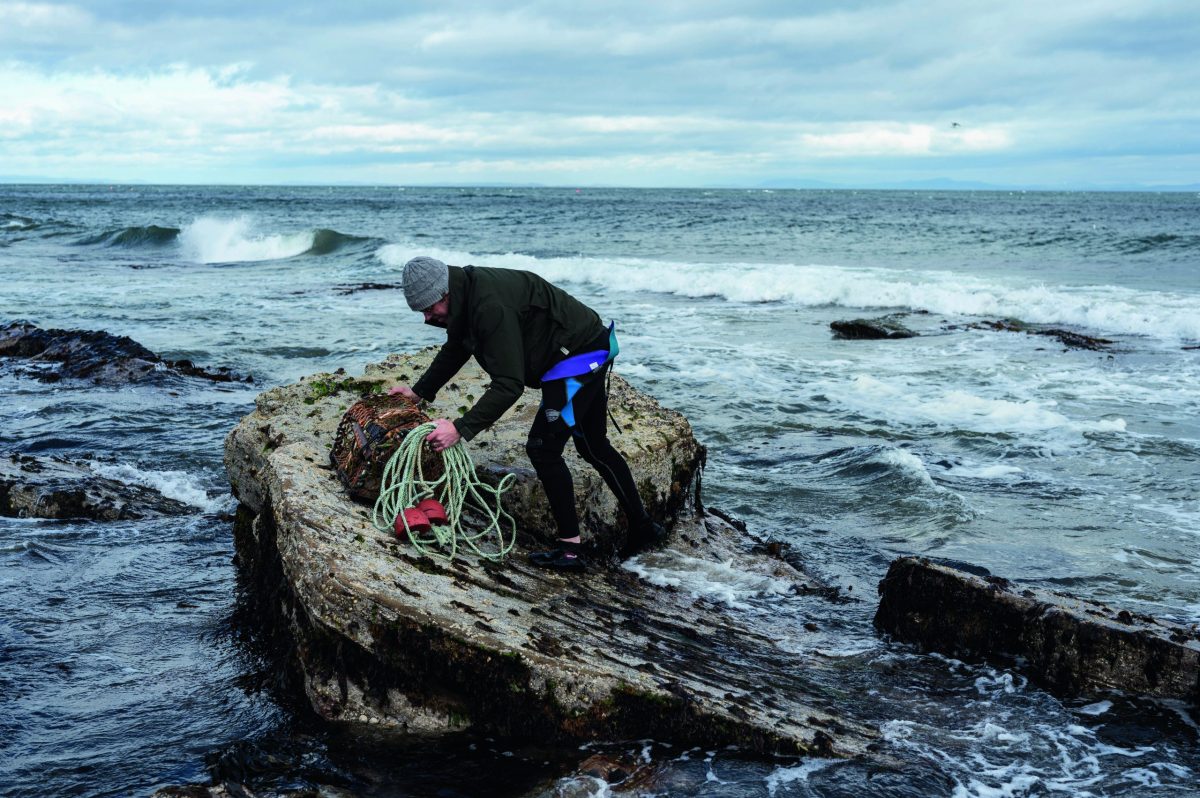Foraging for shellfish – why it’s worth the effort
Scrabbling across the rocks to lay your pots for hungry shellfish can be daunting, says John Wright, but it is well worth all the effort

Dress appropriately for the weather conditions, and avoid going out in rough seas
Unless you are a hardy sort who’s prepared to brave the winter sea, and who has access to a rocky shore with a tidal range in excess of 3m, now is not the time to put out pots from the shore. So I write this only to give you time to prepare.
Even for the brave, a small tidal range will not catch anything as Crustacea retire to the relative peace of deeper waters during the winter and early spring. From late April, however, they will explore nearer to the shore and become accessible to those in possession of a pot or three.
Why from the seashore? Well, putting out pots from a boat is likely to upset those whose livelihoods depend upon it, plus the seashore is accessible to those without a boat.
Undersize pots
Preparation is almost everything, with luck playing its part too. First, there are the pots. I generally use undersize creels — pots that appear rectangular from the side and from above and rounded at the top from either end. I use undersize pots because the professional varieties are too big to carry very far. They come in side entry and top entry forms, the former good for velvet swimming crabs and lobsters, as both can enter a relatively small entry hole.
Top entry pots are best for brown and spider crabs, as those of legal size need a big hole to enter, and the smooth funnel of the entrance gives easy access to the spiny carapace of the latter species. Inkwell pots are also available. If such investment seems reckless, then go for a collapsible pot. These are cheap and lightweight, but may need weighting down to stop them being damaged by the swell.
I always put out a string of pots, all tied together by a weighted rope. These have metal woven into them to ensure that they sink to the bottom, rather than becoming a danger to shipping by floating about on the surface. If you cannot source any weighted rope, then carefully tie multiple fishing weights to some ordinary rope. A float is essential, its tethering rope just long enough to be visible when you return. With a string of pots, just attach one float to an end pot. Pots should be baited, with oily fish, herring or mackerel heads being my favourites. Some pots come with bait compartments, others need the bait tied up in a small net bag.

Crabs can be lured into your pots by the smell of a tempting oily fish head
Personal attire
As for personal attire: as I have a morbid and totally rational fear of the sea, a wetsuit, or preferably a drysuit, is a must. If you want to be brave, then skin will be enough. I also wear a life jacket but, again, this is up to you. In fact, you may not need to get wet at all. In one location, your wetsuited correspondent moves the pots 25m across water 1m deep from large rock to large rock, eventually climbing on to the furthermost rock and throwing them into water that is 2m deep.
In another, and wearing wellies, he carries them to the end of a flat, exposed natural ledge that projects 60m beyond the low tide and simply throws them into the 1.5m of water — though getting them out again requires that the float is accessible from the ledge. The ideal place for catching Crustacea is a rocky shore with sandy areas between the rocks and a lot of seaweed, as this is where they feed and hide.

And of course, at the end of the day, self-caught crabs always taste better
Weather watch
Weather is of great importance, as a rough sea will keep crabs and lobsters in deep water and damage your pots, which will anyway fill completely with seaweed. I have found them stranded high up on the beach when I have ignored this advice. Calm seas and prosperous potting.
Unless you are blessed with an exceptionally large tidal range, pots need to be laid on spring tides. Always lay pots on the ebb, arriving at the beach an hour or so beforehand to tie the pots together and load the bait. Everything should be accomplished before the tide turns. Laying pots is a minimum two-day exercise — you need to collect them, or collect your catch and re-bait. There is no point in leaving them in the water for longer than 24 hours, but two days will be fine.
The moment of looking into a pot to see what you have caught is one of great excitement. The most common species I find is the small but very tasty velvet swimming crab, followed by brown crabs, spider crabs from late May, and the occasional lobster. There is usually a littoral fish or two, but I once caught a couple of large eels. On another occasion, an accompanying friend grabbed a trapped dogfish before I could stop him. It wrapped around his hand and neatly removed a layer of skin with its own sandpaper skin.
It will come as no surprise that there are endless regulations governing the putting out of pots. There are strict minimum landing sizes, seasonal and quantity restrictions and so on. You may need a permit. Contact your local Inshore Fisheries and Conservation Authority. If all the above sounds daunting, then please take my word when I say that it is not, it is just terrific fun.

An undersize lobster about to be released Usd 16 aug 17 lobster








